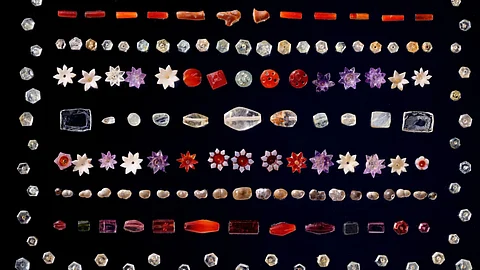
- Home
- न्यूजग्राम
- NewsGram USA
- India
- World
- Politics
- Entertainment
- Culture
- Lifestyle
- Economy
- Sports
- Sp. Coverage
- Misc.
- NewsGram Exclusive
- Jobs / Internships

The Piprahwa discovery of sacred Buddha relics in 1898, was recently listed for auction in Hong Kong.
Piprahwa relics was returned to India following pressure from the Indian government.
The Godrej Industries Group facilitated the acquisition and return of the relics.
The sacred Piprahwa jewels, listed for auction by Sotheby’s in Hong Kong in May 2025, were returned to India on July 30, 2025, following diplomatic intervention and legal threats from New Delhi.
Described by archaeologists as one of the most astonishing finds in modern India, the Piprahwa gems were discovered in 1898 by British estate agent William Claxton Peppé. More than 2,000 years old, these jewels were found near the Nepal border in northern India, in Piprahwa—a village in the Siddharthnagar district of Uttar Pradesh.
It is renowned for its archaeological significance, Piprahwa is believed to be the site where a portion of the Buddha’s ashes was buried and entrusted to his own Sakya clan. Alongside the jewels, archaeologists also discovered ashes and bone relics believed to belong to Lord Buddha.
Historians believe the relics are part of the shared heritage of Gautama Buddha’s Sakya clan descendants and Buddhists around the world. Over time, some of the bone relics have been gifted to countries such as Sri Lanka, Myanmar, and Thailand as symbols of spiritual goodwill.
Chris Peppé, the great-grandson of William Claxton Peppé, said the family had tried to donate the relics but faced numerous obstacles. He stated that auctioning them seemed like the “fairest and most transparent way to transfer these relics to Buddhists.”
The Indian government used multiple legal, diplomatic, and financial channels to halt the sale. As a result, the Godrej Industries Group acquired the relics. In a statement, the Mumbai-based conglomerate expressed its honour in playing a role in this historic moment.
“These relics are not just artefacts—they are timeless symbols of peace, compassion, and the shared heritage of humanity,” said Pirojsha Godrej, Executive Vice Chairperson of Godrej Industries Group. The Ministry of Culture stated, “This momentous repatriation has been made possible through an exemplary public-private partnership between the Government of India and the Godrej Industries Group.”
On July 30, 2025, Prime Minister Narendra Modi announced the return of the Piprahwa relics to India, calling it a proud and joyous moment. He wrote on X, “It would make every Indian proud that the sacred Piprahwa relics of Bhagwan Buddha have come home after 127 long years. These sacred relics highlight India’s close association with Bhagwan Buddha and his noble teachings.”
The collection includes 334 gemstones—such as coral, amethysts, rock crystals, shells, garnets, pearls, and gold—many of which were made into pendants and beads. These items were placed alongside the Buddha’s cremated remains inside a stupa between 240 and 200 BCE. The relics, excavated by William Peppé in 1898, were later handed over. Among the relics found was a reliquary urn with an inscription indicating that the bone relics inside were the Sakya clan’s share of Gautama Buddha’s sacred remains, the founder of Buddhism.
Most of the jewels and relics went to the colonial Indian government, while the bone relics were given to the Buddhist king of Siam, Rama V. Five urns, a stone chest, and many other relics were sent to the Indian Museum in Kolkata, then called the Imperial Museum of Calcutta. In 1971, a team from the Archaeological Survey of India resumed excavations at the Piprahwa site. They dug deeper than the level originally explored by Peppé, and uncovered additional reliquary vases containing fragments of charred bone. These relics which are believed to be from the original burial of the Buddha’s remains, are now preserved in the National Museum in Delhi.
These relics carry profound spiritual significance in Buddhism and are regarded as one of the most important archaeological discoveries in India's history. The sacred Piprahwa relics will be formally unveiled during a special ceremony and later exhibited for public viewing, allowing citizens and visitors from around the world to pay their respects and witness these rare and historic artefacts. [Rh/Eth/VS]
